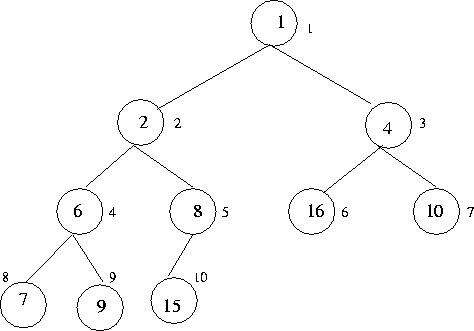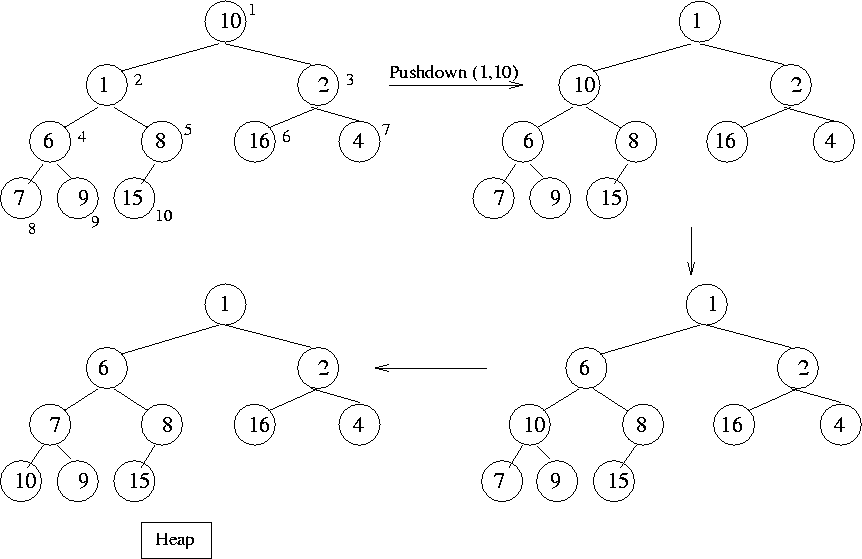


Next:9.6
Quick SortUp:9.
Sorting MethodsPrevious:9.4
Shellsort
9.5 Heap Sort
Worst case as well as average case running time is O(nlog
n)
-
REF.
-
Robert W. Floyd. Algorithm 245 (TreeSort).
Communications of the ACM,
Volume 7, pp. 701, 1964.
-
REF.
-
J.W.J. Williams. Algorithm 232 (Heapsort). Communications of the ACM,
Volume 7, pp. 347-348, 1964.
-
Heap: Recall that a heap is a complete binary tree such that the
weight of every node is less than the weights of its children.
Figure 9.1: Example of a heap
 |
-
A heap with n elements can be conveniently represented as the first
nelements
of an array. Furthermore, the children of a[i] can be found
in
a[2i] (left child) and a[2i + 1] (right
child)
-
See Figure 9.1 for an example
-
Generic heap sort algorithm:
{
Insert
all records to form a heap S;
while (S is not empty)
{
y = min (S);
print the value of y;
delete y from S;
}
}
Heap sort crucially uses a function called pushdown (first, last).
This assumes that the elements a[first], a[first + 1], ..., a[last]
obey the heap property, except possibly the children of a[first]. The function
pushes a[first] down until the heap property is restored.
Example: See Figure 9.2. Here, a[1],...,
a[10]
is a heap except that the children of a[1]violate the heap property.
Figure 9.2: Illustration of some heap operations
 |
Heapsort Algorithm
{
for i
=
i
=  ,
i
> = 1;i - -
,
i
> = 1;i - -
pushdown (i, n); /* initial
heap construction
*/
for( i > = 2;i - -)
i > = 2;i - -)
{
swap records a[i] and a[1];
pushdown (1, i - 1)
}
}
-
It can be shown that the initial heap construction takes O(n) time in the
worst case.
-
The sorting portion takes worst case O(nlog
n)
time.
-
Heap sort can also be used for computing order statistics, ie., kthlowest
in a list of records.



Next:9.6
Quick SortUp:9.
Sorting MethodsPrevious:9.4
Shellsort
eEL,CSA_Dept,IISc,Bangalore



![]() i
=
i
= ![]() ,
i
> = 1;i - -
,
i
> = 1;i - -![]()
![]() i > = 2;i - -)
i > = 2;i - -)